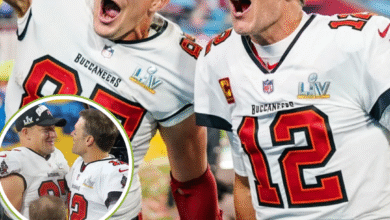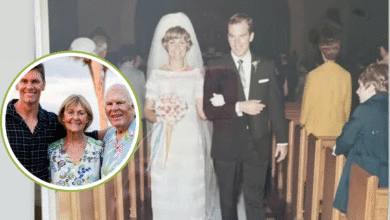Iron Mike’s Final Bow: Why He Chose Life Over the Ring
OPINION: This article may contain commentary which reflects the author's opinion.
Mike Tyson, known to the world as “Iron Mike,” has been a figure of awe, fear, and fascination for nearly four decades. From his meteoric rise as the youngest heavyweight champion in history to his tumultuous personal struggles, Tyson’s life has been a saga played out in the public eye. His final professional boxing match in 2024 against Jake Paul marked the end of an era, a poignant moment where the once-invincible champion faced the reality of time. This essay explores why Tyson, at 58, chose to step away from the ring for good, prioritizing life over the brutal demands of boxing.
The Rise of Iron Mike
Born on June 30, 1966, in Brooklyn, New York, Michael Gerard Tyson grew up in a world of hardship. His early years were marked by poverty and crime, but his life changed when he met trainer Cus D’Amato. D’Amato saw in Tyson a raw talent and a ferocious spirit, molding him into a boxing prodigy. By 1985, Tyson turned professional, and his first 19 fights ended in knockouts, 12 in the first round. At just 20 years, 4 months, and 22 days old, he claimed the WBC heavyweight title, becoming the youngest champion in history.
Tyson’s style was electrifying—compact, aggressive, and devastatingly powerful. His speed, head movement, and knockout power made him a global phenomenon. Nicknamed “Kid Dynamite” and later “the Baddest Man on the Planet,” Tyson unified the WBA, WBC, and IBF titles, reigning as the undisputed heavyweight champion from 1987 to 1990. But beyond the gloves and the glory, Tyson’s life was a complex tapestry of triumphs and tragedies.
The Weight of Fame and Controversy
As Tyson’s fame grew, so did the scrutiny. The 1990s were a turbulent period, with his loss to Buster Douglas, a rape conviction, and the infamous ear-biting incident against Evander Holyfield in 1997. The latter, which led to his disqualification and a $3 million fine, cemented his image as a volatile figure. Tyson later apologized, claiming retaliation for headbutts, but the damage to his reputation was done.
His personal life was equally chaotic. Marriages, financial woes, and substance abuse plagued him. By 2003, despite earning over $300 million in his career, Tyson filed for bankruptcy with $23 million in debt. The man who once seemed invincible was grappling with demons that no punch could vanquish. Yet, Tyson’s story is not one of unrelenting decline. His resilience shone through in his later years, as he sought redemption and purpose outside the ring.
The Final Fight: Tyson vs. Paul
On November 15, 2024, Tyson stepped into the ring one last time at AT&T Stadium in Arlington, Texas, to face Jake Paul, a social media star turned boxer 31 years his junior. The fight, sanctioned and streamed live on Netflix, was a spectacle that drew millions. But for Tyson, it was a stark reminder of his mortality. At 58, his signature speed and explosiveness were gone. Observers noted a heartbreaking disconnect: his mind knew the moves, but his body couldn’t follow.
Tyson lost the fight, but his post-fight reflection was profound. On X, he wrote, “This is one of those situations when you lost but still won. I’m grateful for last night. No regrets to get in ring one last time. I almost died in June. Had 8 blood transfusions. Lost half my blood and 25lbs in hospital and had to fight to get healthy to fight so I won.” This statement encapsulated his shift in perspective. The fight wasn’t about reclaiming glory but about proving to himself that he could still stand.
Why He Chose Life
Tyson’s decision to retire after the Paul fight was rooted in a hard-earned understanding of his limits. In his 2005 final professional fight against Kevin McBride, Tyson admitted, “I don’t have the stomach for this anymore… I’m not an animal anymore.” That sentiment echoed in 2024. Boxing, a sport that demands ferocity and youth, was no longer his arena. His health scare in June 2024, requiring eight blood transfusions and significant weight loss, underscored the fragility of his physical state.
Beyond physical constraints, Tyson’s priorities had shifted. He spoke of his children, saying, “I’m more conscious of my children and those guys.” The man who once knocked out opponents with murderous intent now valued family and legacy over fleeting moments of ring dominance. His Mike Tyson Cares Foundation, launched in 2012, reflects this, aiming to provide opportunities for kids from broken homes.
Tyson’s forays into entertainment—cameos in The Hangover, his one-man show Undisputed Truth, and the animated series Mike Tyson Mysteries—showed a desire to redefine himself. His memoirs, Undisputed Truth (2013) and Iron Ambition (2017), offered introspective looks at his life, revealing a man seeking peace rather than conflict. These ventures were not just financial lifelines but steps toward healing and self-discovery.
The Legacy of Iron Mike
Tyson’s choice to leave boxing was not a surrender but a victory over his past. He had faced Father Time, the undefeated opponent no fighter escapes, and emerged with dignity. His legacy is not just in the belts he won or the knockouts he delivered but in his ability to evolve. From a troubled youth to a global icon, Tyson’s journey is a testament to human complexity—flawed, fierce, and ultimately redemptive.
In his autobiography, Tyson recalled a pivotal moment when Cus D’Amato told him he could paralyze opponents with fear if he had the physique of a Mike Weaver or Ken Norton. Tyson responded, “One day the whole world is going to be afraid of me.” He became that fearsome figure, but in his final bow, he showed that true strength lies in knowing when to walk away.
By choosing life over the ring, Tyson embraced a new fight: to live authentically, to care for his family, and to inspire others. His story reminds us that even the mightiest warriors find their greatest battles outside the spotlight, in the quiet moments of self-acceptance and love.



